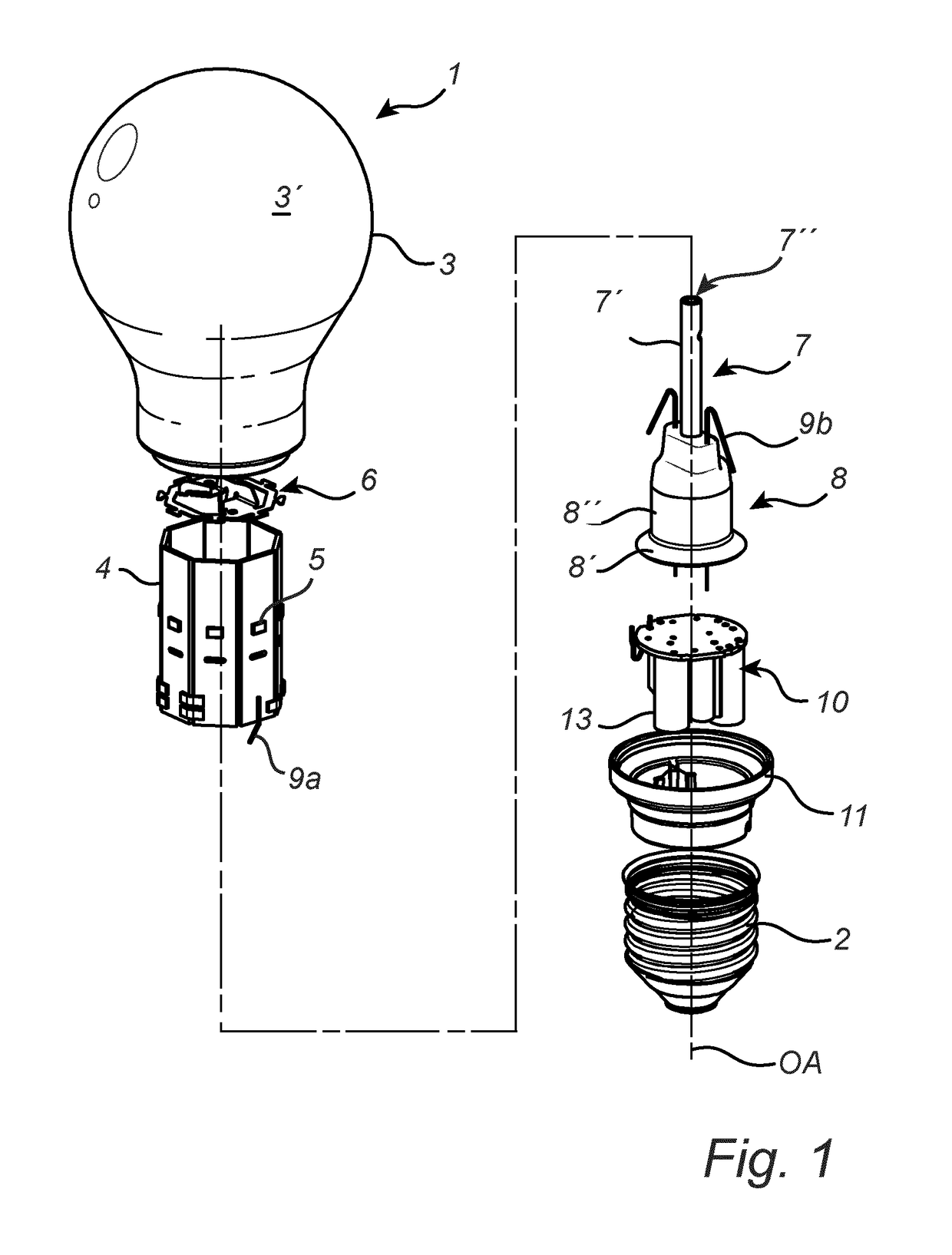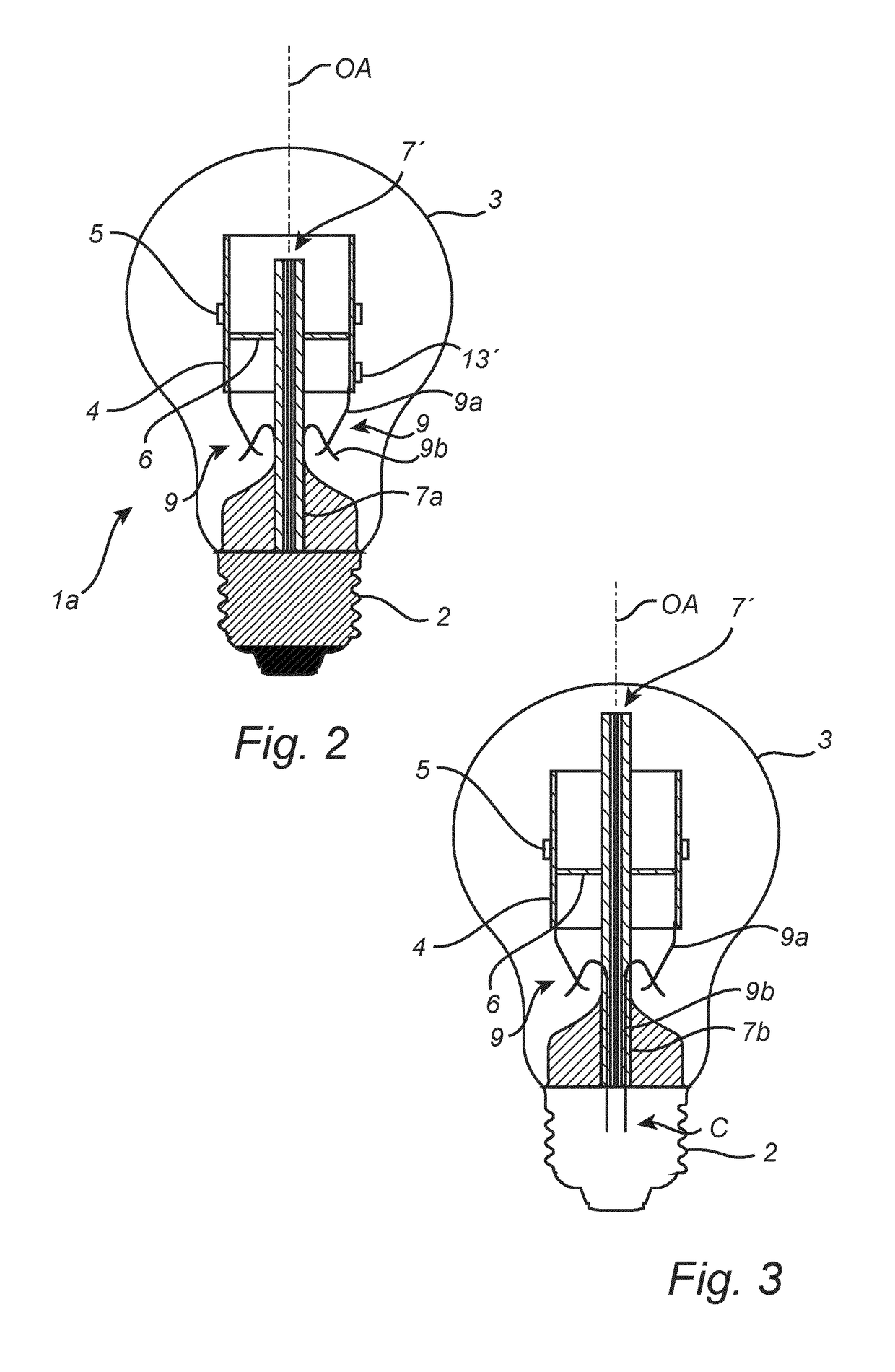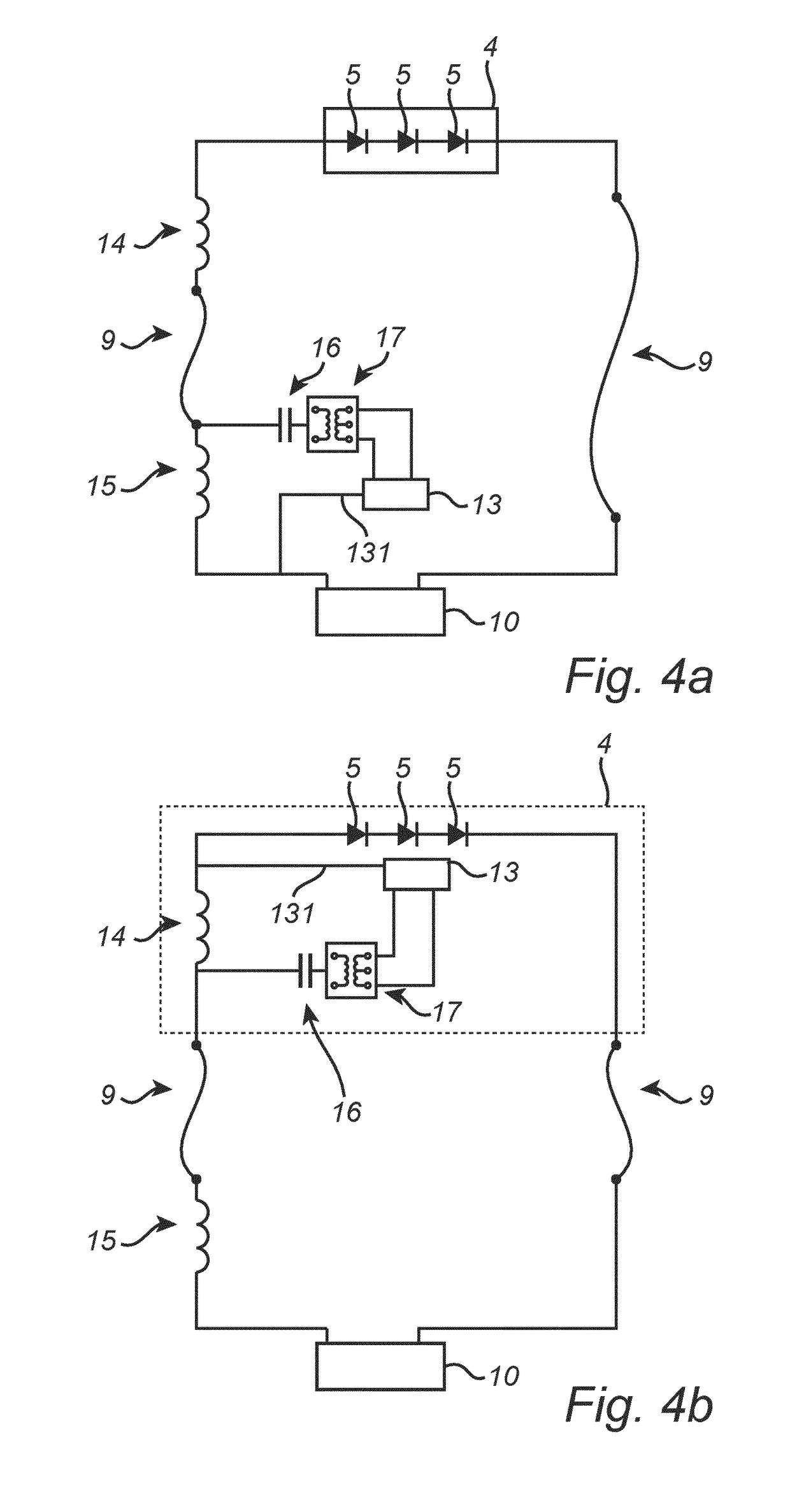Lighting device having a wireless communication antenna
a wireless communication and wireless communication technology, applied in semiconductor devices, lighting and heating apparatus, light source combinations, etc., can solve the problem that the introduction of wireless communication typically requires considerably more space for electronic components, and achieve the effect of preventing or minimizing the amount of direct current electrical power and efficiently receiving control signals
- Summary
- Abstract
- Description
- Claims
- Application Information
AI Technical Summary
Benefits of technology
Problems solved by technology
Method used
Image
Examples
Embodiment Construction
[0030]In the present detailed description, exemplary embodiments of a lighting device according to the present invention are mainly discussed with reference to schematic views showing a lighting device according to various embodiments of the invention. It should be noted that this by no means limits the scope of the invention, which is also applicable in other circumstances for instance with other types or variants of lighting device or components than the embodiments shown in the appended drawings. Further, that specific components are mentioned in connection to an embodiment of the invention does not mean that those components cannot be used to an advantage together with other embodiments of the invention. The invention will now be described with reference to the enclosed drawings where first attention will be drawn to the structure, and secondly to the function. Like reference characters refer to like elements throughout the description.
[0031]The present invention will now be des...
PUM
| Property | Measurement | Unit |
|---|---|---|
| radio frequencies | aaaaa | aaaaa |
| radio frequencies | aaaaa | aaaaa |
| radio frequencies | aaaaa | aaaaa |
Abstract
Description
Claims
Application Information
 Login to View More
Login to View More - R&D
- Intellectual Property
- Life Sciences
- Materials
- Tech Scout
- Unparalleled Data Quality
- Higher Quality Content
- 60% Fewer Hallucinations
Browse by: Latest US Patents, China's latest patents, Technical Efficacy Thesaurus, Application Domain, Technology Topic, Popular Technical Reports.
© 2025 PatSnap. All rights reserved.Legal|Privacy policy|Modern Slavery Act Transparency Statement|Sitemap|About US| Contact US: help@patsnap.com



